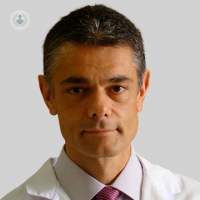Prosthesis infected by bacteria
Written by:¿For that reasons, a prosthesis is infected
?The prostheses are infected because bacteria are living organisms specialized as us over millions of years. They compete with natural space. Under normal circumstances these bacteria are in the skin of people, the surgical team, the patient, but are not able to create a disease. But when the skin is broken the defenses are broken, there is an operation or aggression, the patient is debilitated or in a situation of implant surgery these bacteria can colonize the area of operation and also because there are favored put a foreign material, which is the prosthesis, where no blood nor antibiotic comes in adequate doses. Then these specialized bacteria settle and develop an infection.
¿What types of infections can occur and symptoms present
?Most infections are caused by bacteria. Within this specialization of the bacteria are that they are very aggressive and others which are less aggressive. We classify infections depending mainly on the time when the infection has occurred in relation to the time of placing the prosthesis. They differ in acute, those that occur or show their faces in the first month;subacute, which are those that give the face in the first month and first year;hematogenous and tardies or a prosthesis that has worked normally and that reaches a bacterium and develops an infection in a patient who has had years after pneumonia or procedure in the colon, or bladder that has given a seed or dissemination of bacteria and these have settled in the prosthesis.
¿diagnosed as
?The diagnosis of an infection is complex because there is no simple and unique test that establish infection. It is usually a set of clinical signs and symptoms that you should know interpret laboratory tests, analysis, imaging tests such as an MRI or can be an x-ray or nuclear scintigraphy. And above all crops. Crops to be performed in a specialized laboratory tests and sometimes require complex molecular biology or DNA of bacteria. Still to establish the diagnosis of infection is needed to integrate all these tests since the specialized bacteria, these bacteria create subacute infections, it seems they are dead, it seems that it is in a stationary or latent phase. Then it takes the whole multidisciplinary team has a lot of training to get the best interpretation of that evidence and arrive at the correct diagnosis.
¿, consisting in treatments
?The treatment of an infection of a prosthesis depends on various factors. The causative organism, which is very aggressive or not the bacteria, which is the condition of the patient, if weakened by disease or not, in which case you should not operate but only give antibiotics, and time elapsed since the implantation of the prosthesis to infection, the prosthesis this fixed or not. On most occasions we will have to remove the prosthesis because bacteria make specialized shields or barriers glued dentures and antibiotics do not reach them. We'd have to give them in such high doses that would be toxic to the patient. This is the reason that the prosthesis must be removed when an infection has occurred. In a second time after a course of antibiotics either by vein or oral, when we consider that the infection is eliminated or eradicated can proceed to place a new prosthesis and make a final and reconstruction for patient quality of life and function of the joint.
You have received several awards from the American Academy of Orthopedic Surgeons for his work on hip and knee prostheses, including infection. & iquest;What value do these awards
?That the American Academy of Orthopedic Surgeons has awarded us several surgical techniques and recognized five surgical techniques in the field of prosthetic hip and knee has great value. First and second I am so so professional, because this institution is the most prestigious in our field. In addition, these techniques, the American Academy uses to train traumatologists worldwide, ie that our techniques are no longer exclusively ours and are techniques of the American Academy with which they teach how to solve complex problems such as resolving a infection or adapt to a particular problem in a prosthetic hip or knee. That is the value they have and why we believe they are some merits to certify that we are doing well in this field.



